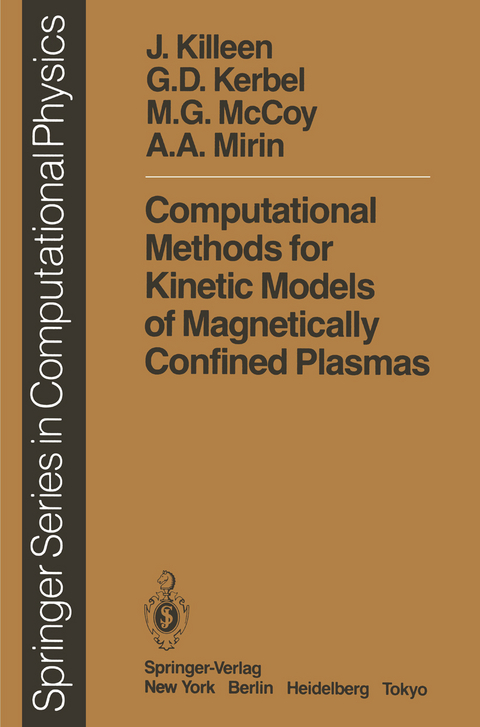
Computational Methods for Kinetic Models of Magnetically Confined Plasmas
Springer Berlin (Verlag)
978-3-642-85956-4 (ISBN)
1 Introduction.- References.- 2 Fokker - Planck Models of Multispecies Plasmas in Uniform Magnetic Fields.- 2.1. Mathematical Model.- 2.2. Solution for a Multispecies Plasma in a One-Dimensional Velocity Space.- 2.3. Solution in a Two-Dimensional Velocity Space Using an Expansion in Pitch-Angle.- 2.4. Solution Using Finite-Differences in a Two-Dimensional Velocity Space.- References.- 3 Collisional Kinetic Models of Multispecies Plasmas in Nonuniform Magnetic Fields.- 3.1. Mathematical Model.- 3.2. Numerical Solution of Bounce-Averaged Fokker - Planck Equations.- 3.3. Applications.- Appendix 3 A. Coefficients of the Bounce-Averaged Operator.- Appendix 3B. Boundary Layer Diagnostic.- Appendix 3C. Tangent Resonance Phenomena.- Appendix 3D. Wave Models.- References.- 4 A Fokker - Planck/Transport Model for Neutral Beam-Driven Tokamaks.- 4.1. Mathematical Model and Numerical Methods.- 4.2. Applications.- References.
| Erscheint lt. Verlag | 4.5.2012 |
|---|---|
| Reihe/Serie | Scientific Computation |
| Zusatzinfo | VIII, 199 p. 54 illus. |
| Verlagsort | Berlin |
| Sprache | englisch |
| Maße | 155 x 235 mm |
| Gewicht | 310 g |
| Themenwelt | Naturwissenschaften ► Physik / Astronomie ► Atom- / Kern- / Molekularphysik |
| Schlagworte | Collision • differential equation • Diffusion • Distribution Function • Equilibrium • Magnetic field • numerical method • partial differential equation • particles • Plasmas • Potential • Solution |
| ISBN-10 | 3-642-85956-9 / 3642859569 |
| ISBN-13 | 978-3-642-85956-4 / 9783642859564 |
| Zustand | Neuware |
| Informationen gemäß Produktsicherheitsverordnung (GPSR) | |
| Haben Sie eine Frage zum Produkt? |
aus dem Bereich


